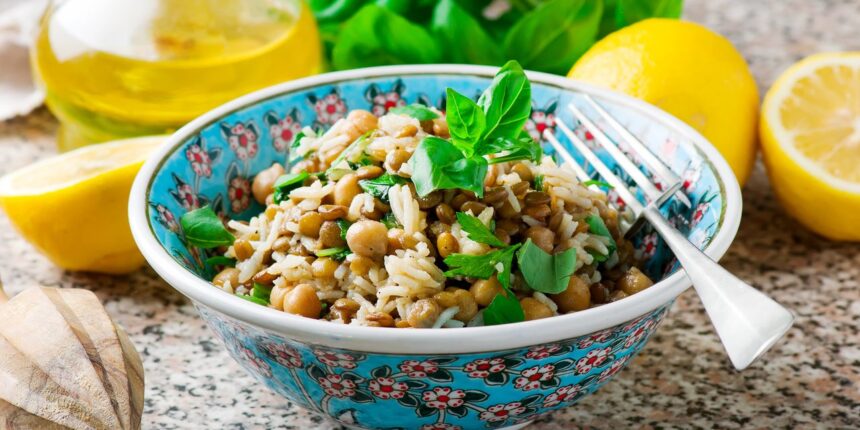Fiber has a ton of GI clout—gastroenterologists regularly praise the nutrient for its ability to keep you regular, nourish your microbiome (the community of bacteria in your gut), and even spark other benefits body-wide. Its fellow carbohydrate starch, by contrast, doesn’t have quite the same aura. It usually gets digested more swiftly in your bowel than fiber, breaking down into glucose (a.k.a. sugar) for energy…and offering less GI support. But as it turns out, not all starches are created equal. Resistant starch is a gut-loving type that functions much like fiber in your system and delivers plenty of its upsides to boot.
As its name suggests, resistant starch is a kind of starch, or string of glucose molecules, that resists digestion. Unlike other starches, it’s composed in a way that makes it tough for the enzymes in your small intestine to process and absorb it. That’s the reason it’s often considered a type of fiber instead: Like the GI darling, resistant starch winds its way to your large intestine, or colon, practically intact, setting off a similarly positive ripple effect for your gut and overall health.
The coolest thing about resistant starch is that, while it can be found naturally in some foods that also contain fiber (like oats and legumes), you can also create it in refined grains like white pasta and white rice by preparing them in a certain way. All you have to do is cook and then fully cool them before eating. Refrigeration causes “retrogradation, or a rearrangement of the starch molecules [in these foods] that results in a resistant starch,” Bridgette de Juan, RDN, lead registered dietitian at Orlando Health, tells SELF. So, while these foods have had much of their fiber stripped out in processing, you can essentially turn them back into a fiber source (and reap the benefits) by transforming them into more resistant starches. Even better, they also don’t have to be cold when you eat them. Once those starch molecules change structure and get more resistant via cooling, they tend to stay that way even after reheating the food, de Juan explains.
Read on to learn why upping your intake of resistant starch can be a boon for your gut and beyond, and exactly how to get more of this good stuff into your diet.
What are the benefits of resistant starch for your gut and overall health?
The digestive perks spring mainly from how this starch moves through your small intestine relatively unscathed. Like insoluble fiber, resistant starch doesn’t dissolve in water, so as it chugs through your GI tract, it bulks up your poop to push things along, aiding with regularity. But once it gets to your colon is really “where the magic happens,” de Juan says.
There, it acts like a type of soluble fiber called a prebiotic, “serving as the foundation or the soil for the garden of healthy bacteria that is growing there,” she says. Those good gut bugs, or probiotics, eat up that resistant starch as fuel, which allows them to proliferate and fight off the bad guys. As they ferment that starchy goodness, they also create beneficial byproducts, like short-chain fatty acids (SCFAs), Sandra Arévalo, MPH, RDN, a registered dietitian and spokesperson for the Academy of Nutrition and Dietetics, tells SELF. These chemicals provide energy to your colon cells, which helps maintain the integrity of your gut lining (so harmful pathogens are less likely to seep through and make you sick). SCFAs can also lend a hand to your immune system, cutting down on inflammatory substances in your gut while ramping up the release of anti-inflammatory ones.
Read the full article here



